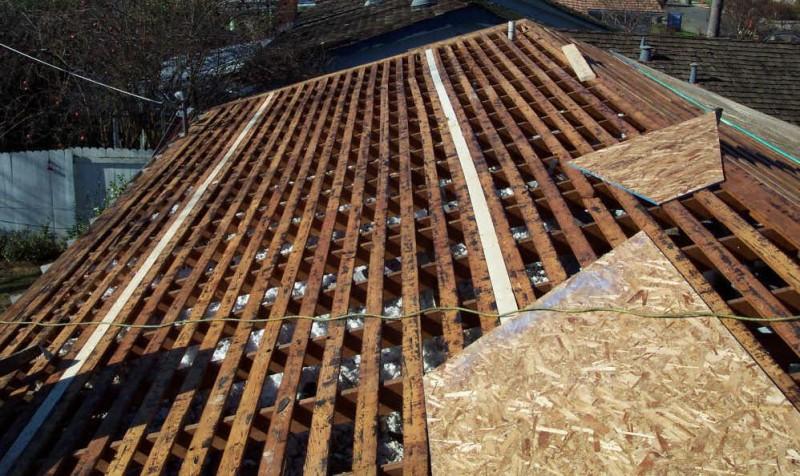In the world of roofing, innovation is constantly evolving to improve durability, energy efficiency, and installation processes. One such innovation is the skip sheathing metal roof. This roofing system offers unique advantages, but it also raises questions about its suitability for various applications. In this article, we’ll delve into the concept of skip sheathing for metal roofs, exploring its benefits and considerations.

What Is Skip Sheathing?
An Unconventional Approach
Traditionally, roofing materials are applied over a continuous sheathing or decking, which provides a solid and continuous surface for the roofing material to adhere to. Skip sheathing, on the other hand, involves leaving gaps or spaces between the sheathing material, creating a “skip” pattern.
Benefits of Skip Sheathing for Metal Roofs
1. Ventilation and Moisture Control
One of the primary benefits of skip sheathing for metal roofs is improved ventilation and moisture control. The gaps between the sheathing allow air to circulate more freely, reducing the risk of moisture buildup and mold growth in the attic or under the roof.
2. Energy Efficiency
Improved ventilation can contribute to better energy efficiency. In hot climates, skip sheathing can help reduce heat buildup in the attic, lowering cooling costs. In colder climates, it can prevent ice dam formation by promoting consistent roof surface temperatures.
3. Reduced Weight and Material Costs
Skip sheathing reduces the weight of the roofing system, which can be advantageous for certain structural considerations. Additionally, it may reduce the amount of sheathing material required for the roof, potentially lowering material costs.
Considerations for Skip Sheathing with Metal Roofs
1. Roofing Material Compatibility
Not all roofing materials are suitable for skip sheathing. Metal roofing, however, is particularly well-suited for this method due to its rigidity and ability to span gaps without sagging or warping.
2. Local Building Codes*
Before opting for skip sheathing, it’s essential to check local building codes and regulations. Some areas may have specific requirements regarding roof sheathing and ventilation.
3. Roofing System Design*
Skip sheathing may not be suitable for all roofing system designs. It is typically used with certain types of metal roofing, such as standing seam or corrugated metal. Consult with a roofing professional to determine if skip sheathing is appropriate for your specific project.
Installation Considerations
1. Proper Spacing
Carefully plan and space the gaps between the sheathing according to manufacturer recommendations and local building codes. Proper spacing ensures structural integrity and performance.
2. Underlayment*
In skip sheathing systems, an appropriate underlayment is crucial to provide a moisture barrier and protect against leaks. Typically, installers place the underlayment over the sheathing before installing the metal roofing panels.
3. Professional Installation*
Skip sheathing requires precise planning and installation to ensure its benefits are fully realized. It’s advisable to hire a professional roofing contractor with experience in skip sheathing installations.
Conclusion
Skip sheathing for metal roofs is an innovative approach that offers various benefits, including improved ventilation, energy efficiency, and reduced weight and material costs. However, it is essential to carefully consider factors such as roofing material compatibility, local building codes, and the specific design of your roofing system before opting for skip sheathing. When properly installed, skip sheathing can be a valuable addition to your metal roof, contributing to its performance and longevity. Consult with a roofing professional to determine if skip sheathing is the right choice for your roofing project.



Leave a Reply